Achieving healthy, radiant skin has become a coveted goal in today’s beauty-conscious world. Microneedling is a minimally invasive cosmetic procedure that has grown in popularity in recent years. It works to rejuvenate the skin by promoting the creation of collagen. Microneedling procedures, which were previously only performed in medical facilities or spas, are now also available for use at home thanks to the development of microneedling pens. These portable devices have small needles that puncture the skin’s surface in a controlled manner, triggering the body’s natural healing response and encouraging the synthesis of new collagen and elastin.
In this article, we will explore the nine best at-home microneedling pens, highlighting their pros and cons and potential side effects. While microneedling pens are practical and inexpensive, it’s essential to comprehend their advantages and disadvantages before adopting them into your skincare regimen. So head on to learn more about it!
What Are Microneedling Pens?

A microneedling pen, often called a derma pen, is a portable tool used for microneedling procedures. It is made up of a tiny, pen-like instrument with a motorized tip and several little needles inside. These needles make small wounds or channels in the skin’s surface by penetrating it at a regulated depth.
A microneedling pen’s main function is to encourage the skin’s natural healing process and collagen and elastin synthesis. New collagen and elastin fibers are produced due to the body’s natural wound-healing response as the needle punctures the skin. This collagen induction therapy addresses fine lines, wrinkles, acne scars, uneven skin tone, and enlarged pores while enhancing the skin’s general texture and look.
Microneedling pens have the benefit of being practical and easy to use at home. They give people a chance to carry out microneedling procedures in the convenience of their own homes without the need for expert guidance or clinic visits. Using a microneedling pen with appropriate hygiene and safety measures will reduce the risk of infection and other consequences.
Benefits of Microneedling Pens
If you are looking to enhance the look and condition of your skin, microneedling pens have a number of advantages. The following are some of the main advantages of utilizing a microneedling pen.
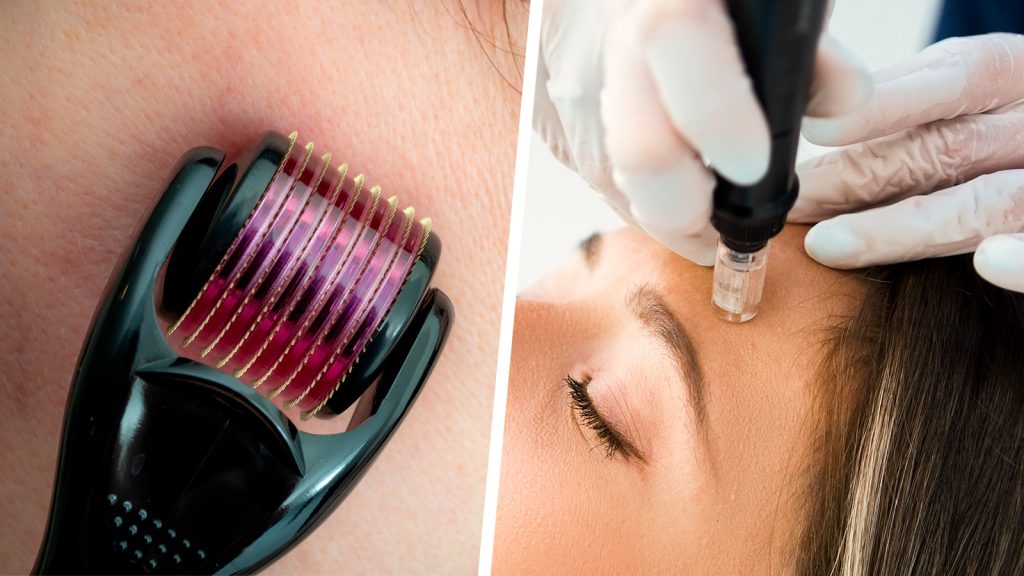
1. Microneedling Pens Helps Collagen stimulation
Microneedling pens cause small, regulated skin injuries that set off the body’s inborn healing process. This promotes the synthesis of fresh collagen and elastin fibers, which enhance the skin’s firmness, elasticity, and texture.
2. Using Microneedling Pens Reduces fine lines and wrinkles
Microneedling, which stimulates the formation of collagen and elastin, can aid in reducing the appearance of fine lines and wrinkles. It encourages skin renewal and might help you look younger by improving your complexion.
3. Microneedling Pens Helps In Acne Scar Improvement
Microneedling pens can be useful in reducing the visibility of acne scars. It aids in smoothing the texture and tone of the skin with acne scars by boosting collagen synthesis and skin cell turnover.
4. Enhances skin care product absorption
The small channels generated by microneedling enable skincare products to penetrate deeper into the skin. This improves the penetration and efficacy of topical therapies like serums, moisturizers, and goods containing vitamins.
5. Microneedling Pens Helps To Reduced Hyperpigmentation
You can reduce the appearance of sunspots, age spots, and melasma with the help of microneedling. The body replaces damaged pigmented skin cells with healthier, equally colored skin cells due to the controlled harm to the skin.
6. Pore tightening
Repeated use of microneedling pens can reduce the appearance of enlarged pores. The promotion of collagen and elastin synthesis aids in overall skin tightness and the refinement of pores.
7. Suitable for various skin types and concerns
You can use microneedling pens on different skin types, including sensitive skin, as they are adaptable. They can address various skincare issues, such as aging symptoms, acne scars, hyperpigmentation, and uneven skin texture.
8. You can use it at Home
One of the major benefits of microneedling pens is that they enable people to carry out treatments at home, saving time and money compared to visits to a clinic. This convenience feature makes it feasible for individuals who like a DIY skincare program.
9 Best Microneedling Pens: Their Pros, Cons, and Costs
In recent years, microneedling has gained popularity as a non-invasive cosmetic procedure that stimulates collagen production in the skin. An effective tool for microneedling is a microneedling pen, which creates tiny punctures in the skin with fine needles. These pens are designed for home or professional use and offer various benefits, such as improved skin texture and reduced signs of aging. However, with a wide range of available options, it’s essential to consider the pros, cons, and costs before selecting the best microneedling pen for your needs. So scroll through and explore nine of the best microneedling pens.
9 Best Microneedling Pens:
1. Dr. Pen Ultima A6 Microneedling Pen
The Dr. Pen Ultima A6 is a well-liked microneedling pen with changeable needle depth that lets you personalize the procedure to meet your unique demands. You can choose from various speed settings, allowing you to regulate the level of intensity. Also, you can pen use this pen to treat a variety of skin issues, such as fine wrinkles, uneven skin tone, and acne scars.
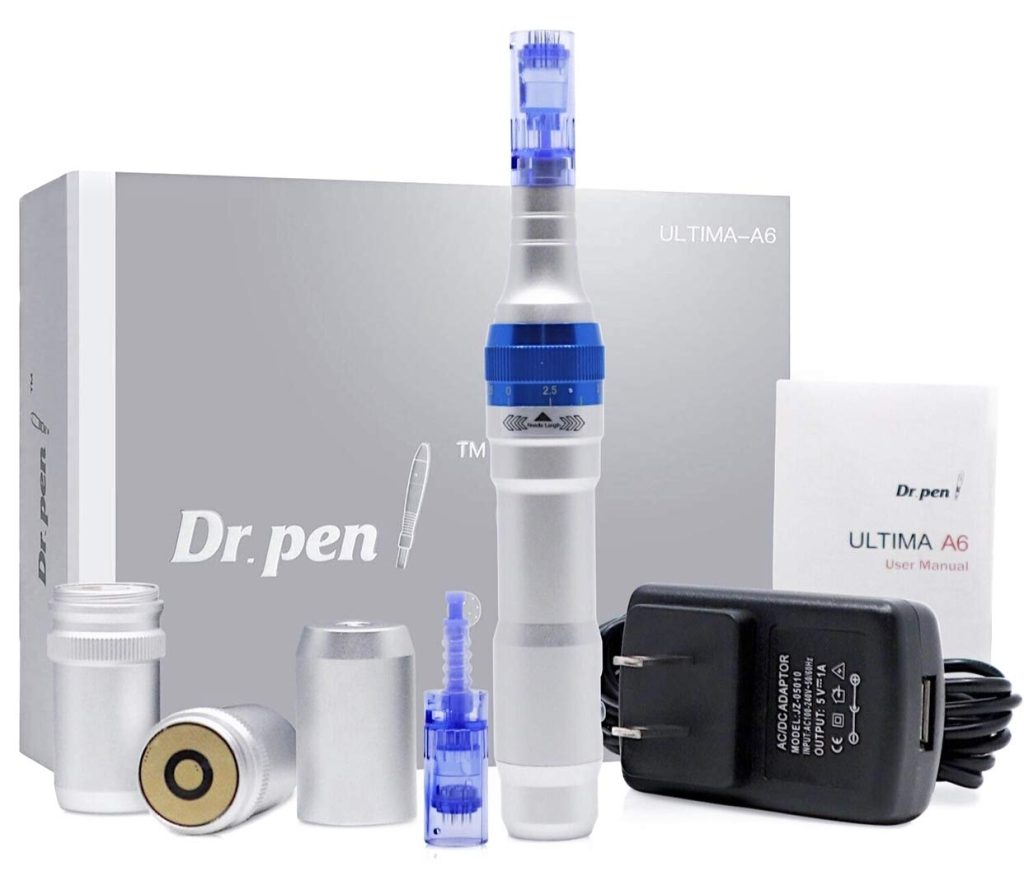
- Price: $100 – $150
- Pros: Adjustable needle depth, multiple speed settings, suitable for various skin concerns.
- Cons: It may be more expensive compared to other options.
2. ORA Face Microneedle Dermal Roller System
ORA Face Microneedle Dermal Roller System is best for beginners because of its affordability and also because it is easy to use. When rolled over the skin, this roller provides microchannels that enable skincare products to permeate the skin more deeply and increase their efficacy. Also, it increases moisture, decreases fine lines and wrinkles, reduces pore size, and general skin renewal.
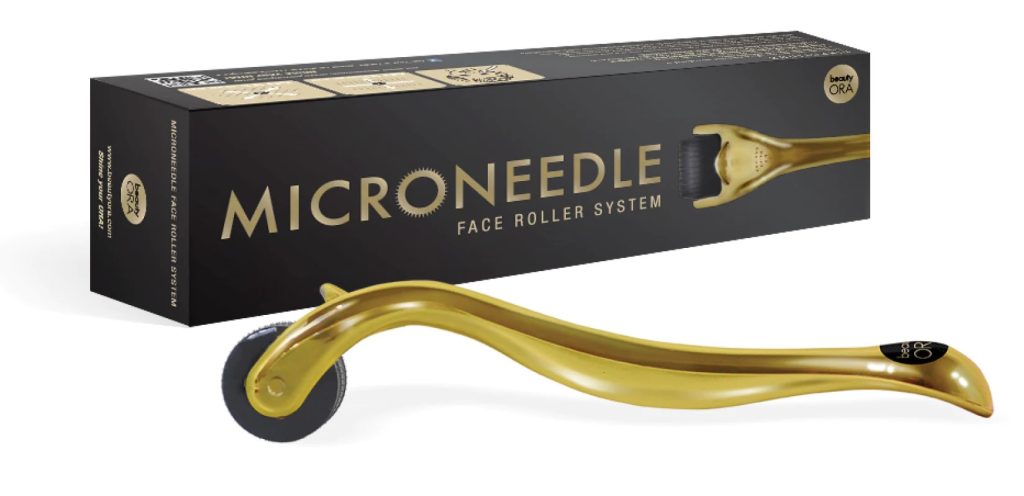
- Price:$20 – $30.
- Pros: Affordable, easy to use, suitable for beginners.
- Cons: Fixed needle length may require more pressure during use.
3. BeautyBio GloPRO Microneedling Regeneration Tool
BeautyBio GloPRO Microneedling Regeneration Tool gently rolls over the skin. The needles create microchannels, which trigger the skin’s natural healing process and stimulate collagen and elastin production. This can lead to a reduction in the appearance of fine lines, wrinkles, and acne scars, as well as improved skin firmness and overall radiance.
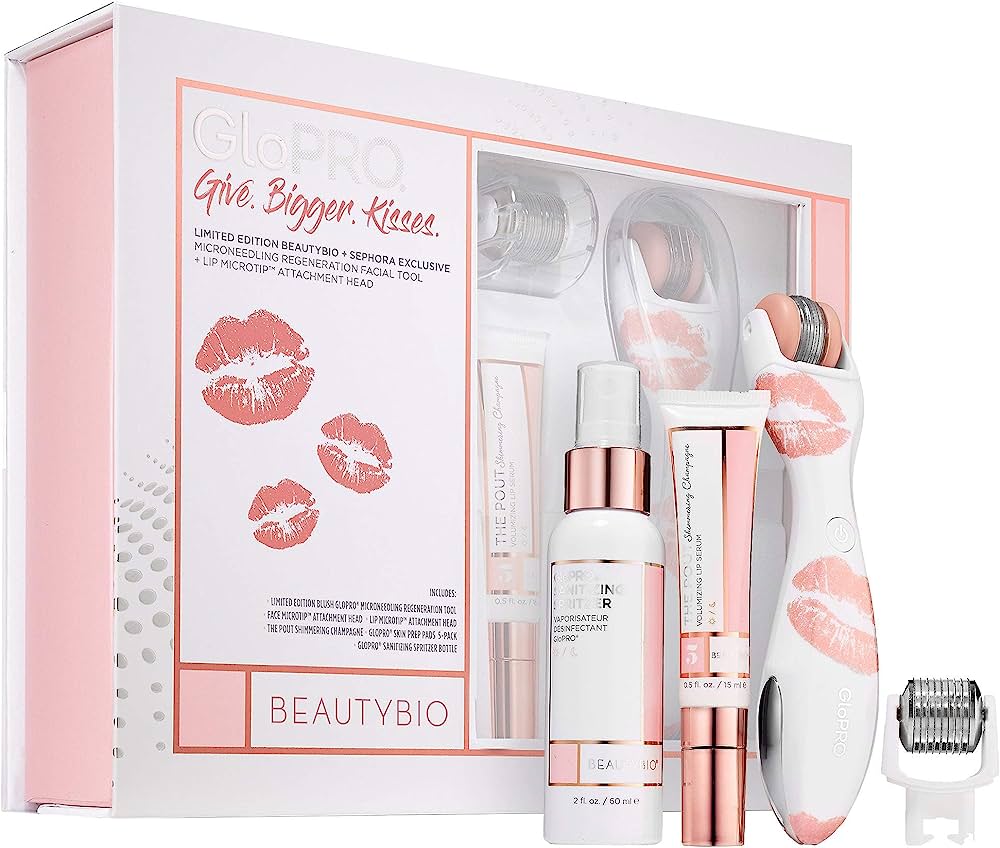
- Price: $200 – $250
- Pros: LED light therapy, interchangeable attachment heads, effective for fine lines and wrinkles.
- Cons: Higher price point, limited needle length options.
4. StackedSkincare Microneedling Tool
Using the StackedSkincare Microneedling Tool with its changeable needle length will help you tailor the procedure to your tastes and particular skin issues. The needles are made of stainless steel, which is strong and more hygienic. The tool’s lightweight construction makes it simple to handle while administering treatment.

- Price: $125 – $175
- Pros: Adjustable needle length, stainless steel needles, lightweight design.
- Cons: It can be more expensive than other options.
5. Beauty ORA Electric Microneedle Derma Pen System
The Beauty ORA Electric Microneedle Derma Pen System is an electric microneedling pen with a variable needle depth. It is convenient to use and suited for facial and body treatments thanks to its cordless design. However, compared to other pens, it can need needle replacements more frequently, a potential downside.
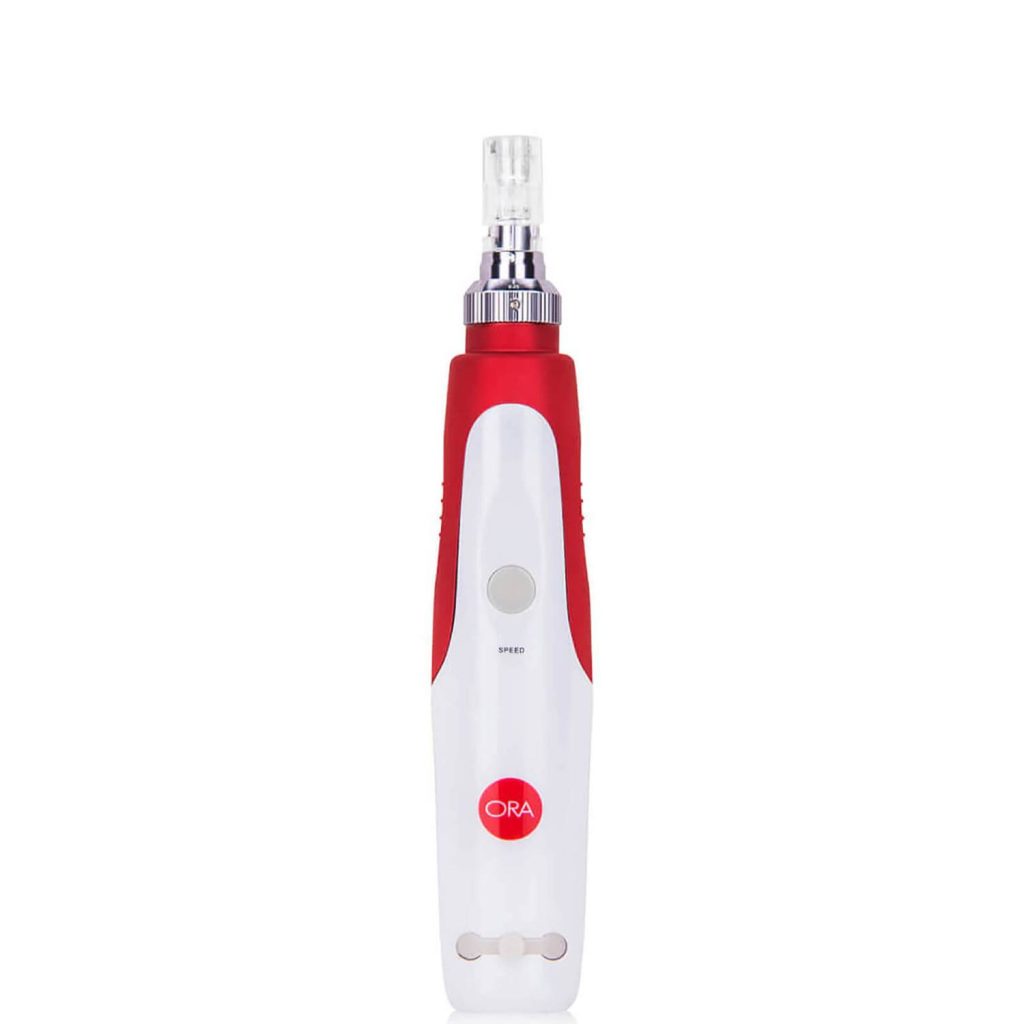
- Price: $70 – $90.
- Pros: Adjustable needle depth, cordless design, suitable for face and body.
- Cons: May require more frequent needle replacements.
6. Dr. Pen Ultima M5 Professional Microneedling Pen
The Dr. Pen Ultima M5 Professional Microneedling Pen offers adjustable needle depth for personalized treatments as a cost-effective alternative. It is appropriate for various skin issues, including fine lines and acne scars. Although it is reasonably priced, some users have claimed that it may not be as durable as other microneedling pens.
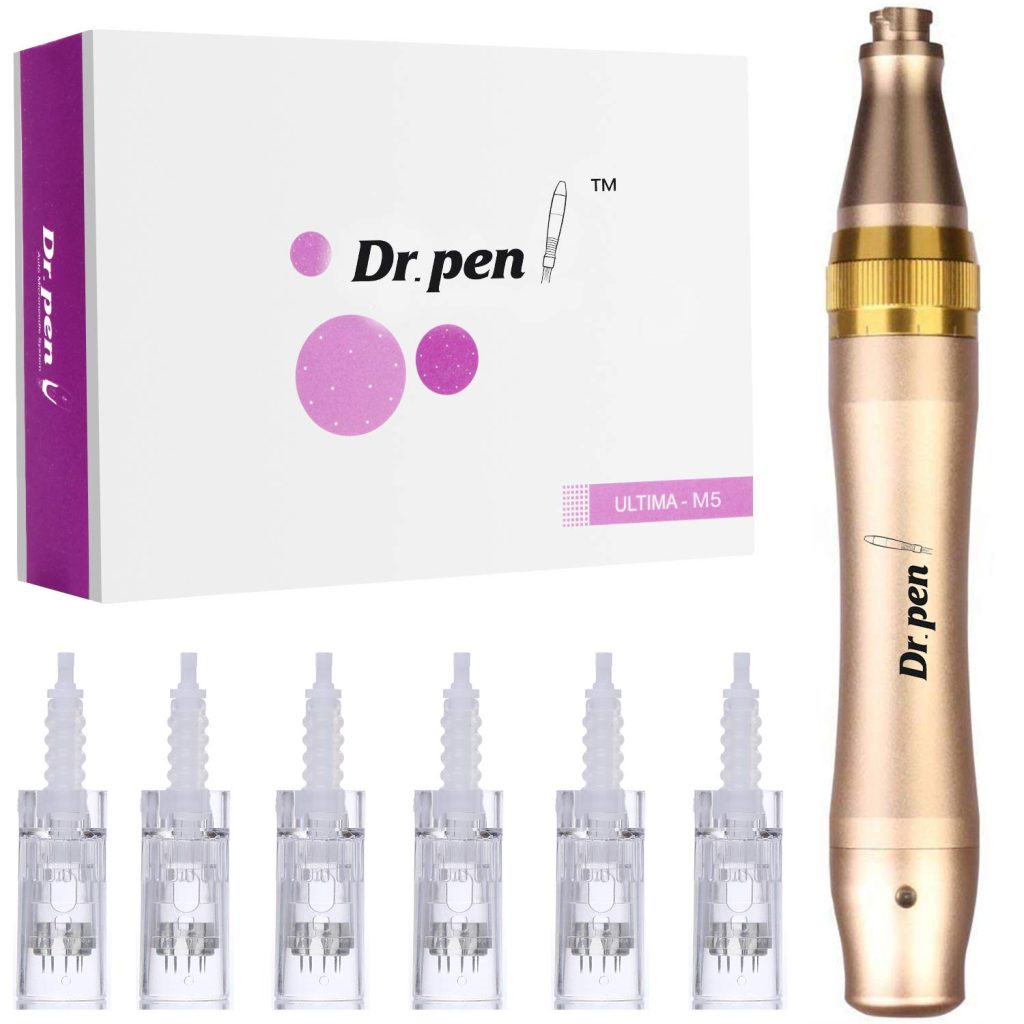
- Price: $60 – $80
- Pros: Adjustable needle depth, suitable for various skin concerns, good value for money.
- Cons: It may be less durable compared to other options.
7. Prosper Beauty Derma Roller Kit
The Prosper Beauty Derma Roller Kit is an inexpensive option that includes a derma roller and extra skincare items. It is perfect for those new to microneedling and who are searching for a simple tool. However, it is manually operated and has a fixed needle length, which limits adjustability and convenience.

- Price: $25 – $35
- Pros: Affordable, includes additional skincare products, suitable for beginners.
- Cons: Fixed needle length, manual operation.
8. Sdara Skincare Microneedle Roller
Another reasonably priced and user-friendly choice is the Sdara Skincare Microneedle Roller. Beginners who wish to add microneedling to their skincare regimen can use it. It has a fixed needle length, just like the Prosper Beauty Derma Roller Kit, and may require additional pressure during use for an effective treatment.
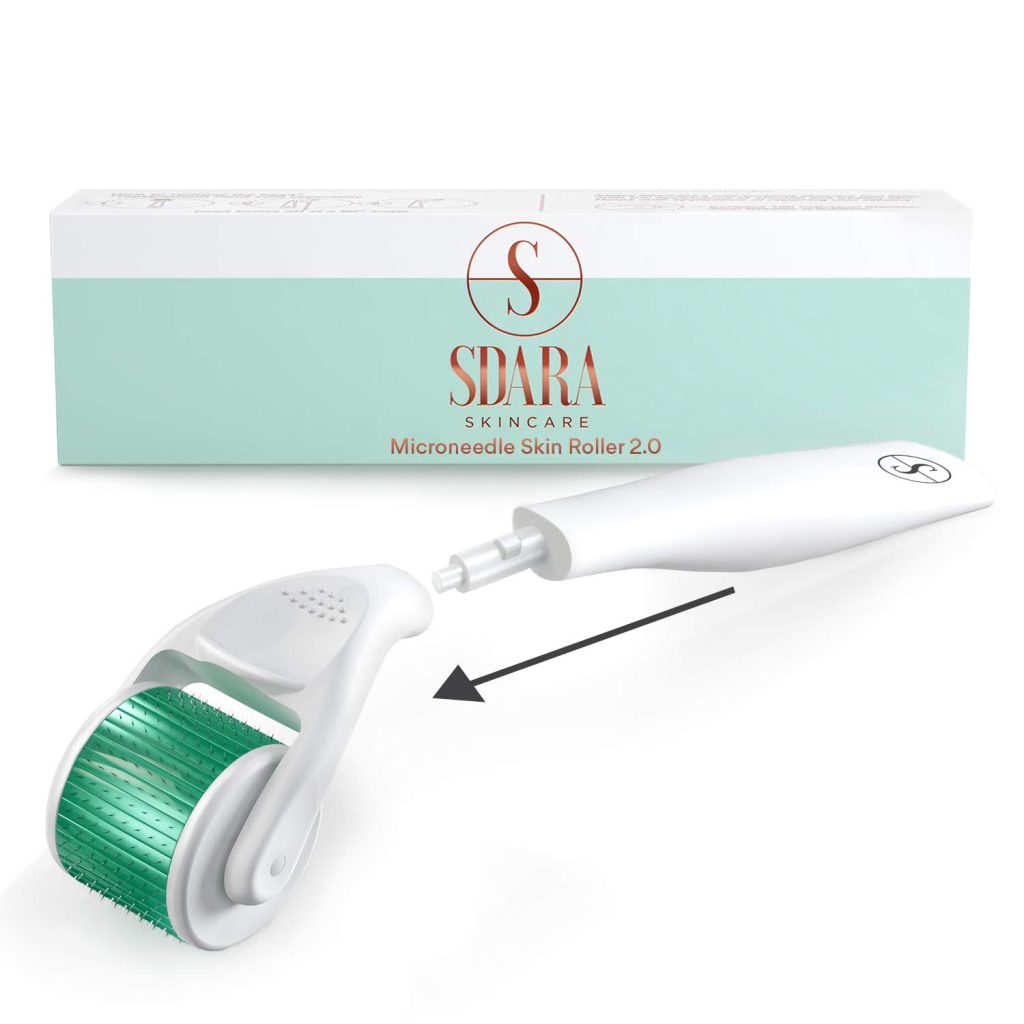
- Price: $15 – $25.
- Pros: Affordable, easy to use, suitable for beginners.
- Cons: Fixed needle length may require more pressure during use.
9. Dermaroller Microneedling Roller
The Dermaroller Microneedling Roller is a reasonably priced choice with a range of needle lengths to address different skin issues. Also, it can be used to treat problems like acne scars, uneven skin tone, and fine wrinkles. However, it requires manual operation and has a fixed needle length.
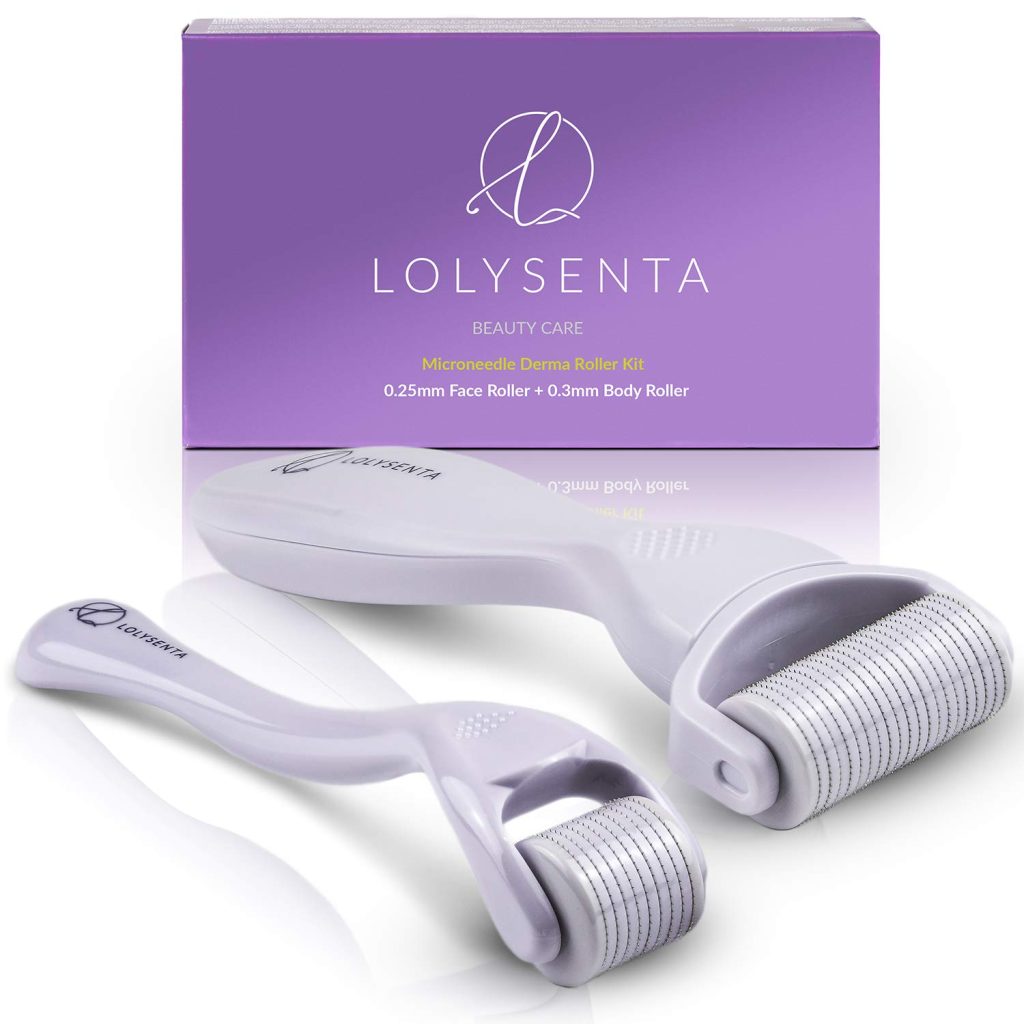
- Price: $15 – $25.
- Pros: Affordable, available in different needle lengths, suitable for various skin concerns.
- Cons: Fixed needle length, manual operation.
What is the Suitable Needle length?
The appropriate needle length for microneedling depends on the specific skin concern and the area of the body you want to treat. Here are some broad recommendations for needle lengths appropriate for various needs.

Acne
Shorter needle lengths are always used to treat acne and acne scars. Active acne outbreaks and acne scars can both be treated with needles of lengths between 0.5mm and 1.0mm. With less discomfort and less potential harm, shorter needles aid in promoting collagen formation and skin healing.
Uneven Skin Tone
Needle lengths between 0.5mm and 1.5mm are frequently used to treat uneven skin tone, including hyperpigmentation and sunspots. These lengths can increase cell turnover for equal skin pigmentation and improve the absorption of topical treatments.
It’s crucial to be cautious and begin with lesser needle lengths before gradually increasing them. It’s important to remember that the length of the needle should be determined by the patient’s skin sensitivity, tolerance, and consultation with a dermatologist or skincare expert. They can offer tailored advice based on your unique requirements and skin condition. The needle’s depth and tolerance of the patient’s skin determine how frequently microneedling treatments needs to be done.
The following are some general principles:
- Treatments applied superficially with shorter needles (0.25mm to 0.5mm): These can be carried out more often, typically every one to two weeks.
- Moderate-depth treatments with medium-length needles (0.5mm to 1.0mm): These are normally performed once every two to four weeks, giving the skin enough time in between treatments to rest and repair.
- Deeper procedures using longer needles (1.0mm to 1.5mm): These are often administered less frequently, at 4–6 weeks intervals, as they have a higher potential for micro-injuries of greater severity, and it takes longer recovery time.
Pay attention to your skin’s needs and change the frequency of treatments as necessary. Skin irritation, discomfort, or injury could result from overusing a microneedling pen or using long needles without adequate rest time. Always adhere to the manufacturer’s recommendations and get advice from a skincare expert to find the right frequency for your requirements.
Stainless Steel vs. Titanium Needles
Needles for microneedling pens can be manufactured from several materials, with titanium and stainless steel being the most popular choices.
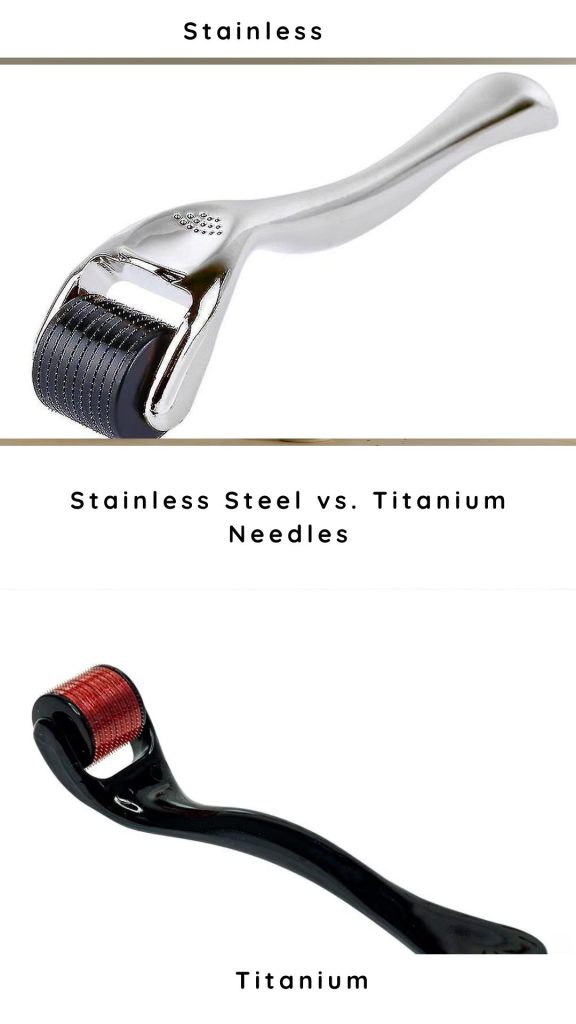
Here is a comparison between titanium and stainless steel needles:
Stainless Steel Needles:
- In general, stainless steel needles are less expensive than titanium ones.
- They are renowned for their longevity and corrosion resistance.
- Sharp and efficient stainless steel needles can be used for microneedling procedures.
- However, compared to titanium needles, stainless steel needles could be more prone to dulling over time.
Titanium Needles:
- Titanium needles are suitable for people with delicate or reactive skin because they are light and hypoallergenic.
- They are renowned for their durability and inability to bend or break while in use.
- Many people believe that titanium needles are sharper and offer a more accurate and comfortable microneedling experience.
- The possibility that these needles will irritate the skin or induce allergic responses is lower.
It’s crucial to take into account your unique skin sensitivity and any potential allergies when deciding between stainless steel and titanium needles for microneedling. Although titanium needles can be used to perform microneedling treatments just as well as other materials, they may have some advantages for people with sensitive or reactive skin.
In addition to the needle material, it’s important to keep in mind the general design and quality of the microneedling pen itself. To ensure safety and top performance, look for pens that are well-made, simple to clean, and have adjustable needle depth settings. The final decision between stainless steel and titanium needles may depend on the user’s personal preferences, financial constraints, and skin type. Also, consult a dermatologist or skincare expert if you have questions or specific skin conditions so they can make advice that is tailored to your need.
Precautions to Take While Using Microneedling Pen
Following a few guidelines while using a microneedling pen is crucial to ensure safety and reduce the possibility of issues.
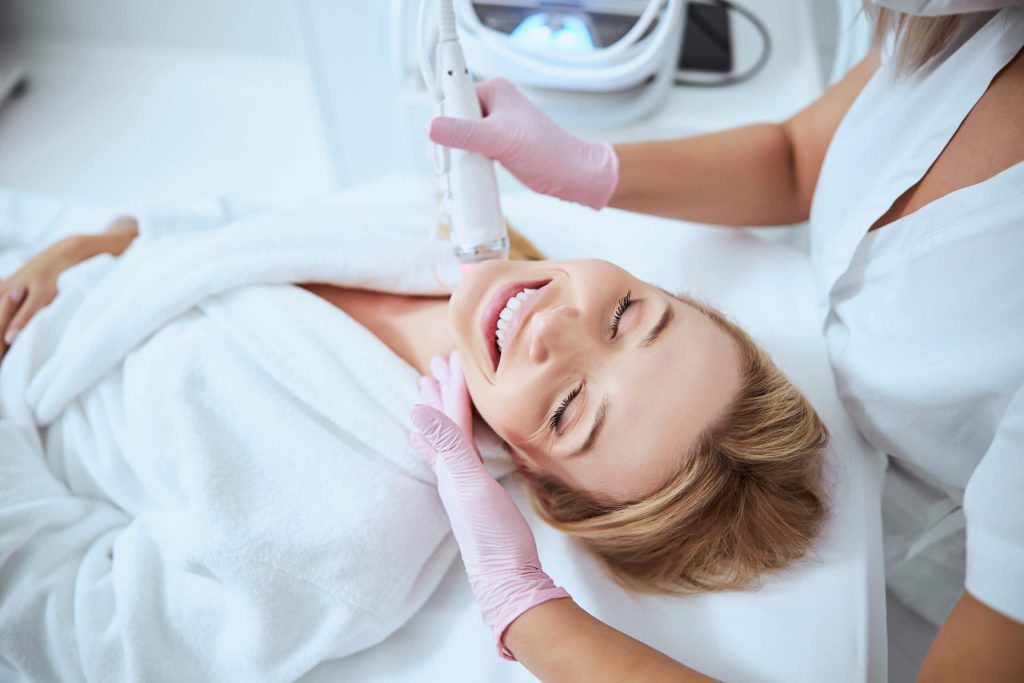
Here are some crucial safety measures to take into account:
- Cleanse and disinfect: Thoroughly wash your face and the microneedling pen to remove any dirt, oils, or bacteria before using it. To maintain proper hygiene, sterilize the microneedling pen following the manufacturer’s recommendations.
- Observe directions: Carefully read and adhere to the microneedling pen’s manufacturer’s instructions. Pay close attention to the usage recommendations for your equipment, including the depth settings and suggested needle lengths.
- Patch test: To check for any negative responses or sensitivity to the microneedling therapy, perform a patch test on a tiny skin patch. Check the skin for any indications of redness, irritation, or allergic reactions after 24 to 48 hours.
- Select the proper needle length: Based on your unique skin condition and the advice of a dermatologist or skincare expert, choose the needle length. Avoid using needles that are too long or using too much pressure, as these practices can harm the skin or raise problems.
- Practice good hygiene: Throughout the operation, make sure that your skin and the microneedling pen are both clean. To stop the spread, refrain from sharing the device with others and avoid handling the needles with bare hands.
- Avoid sensitive regions: Use caution when caring for the delicate skin around the eyes and other sensitive places. In general, it is advised against using microneedling on skin that is infected, has open wounds, or is experiencing active acne outbreaks.
- Sun protection: Your skin may be more sensitive to sunlight after microneedling. Use a broad-spectrum sunscreen with a high SPF to shield your skin from UV radiation and reduce the chance of sunburn.
- Give your skin enough time to heal in between microneedling treatments to ensure proper healing. Listen to your skin and follow the recommended frequency instructions. Inadequate healing time or overusing the microneedling pen might cause skin irritability, inflammation, or other problems.
Side Effects of Microneedling
While microneedling is generally considered safe when performed correctly, there are potential side effects that you should be aware of. Depending on a person’s skin sensitivity, the depth of the needles used, and the observance of adequate hygiene and aftercare, these side effects may vary in severity.
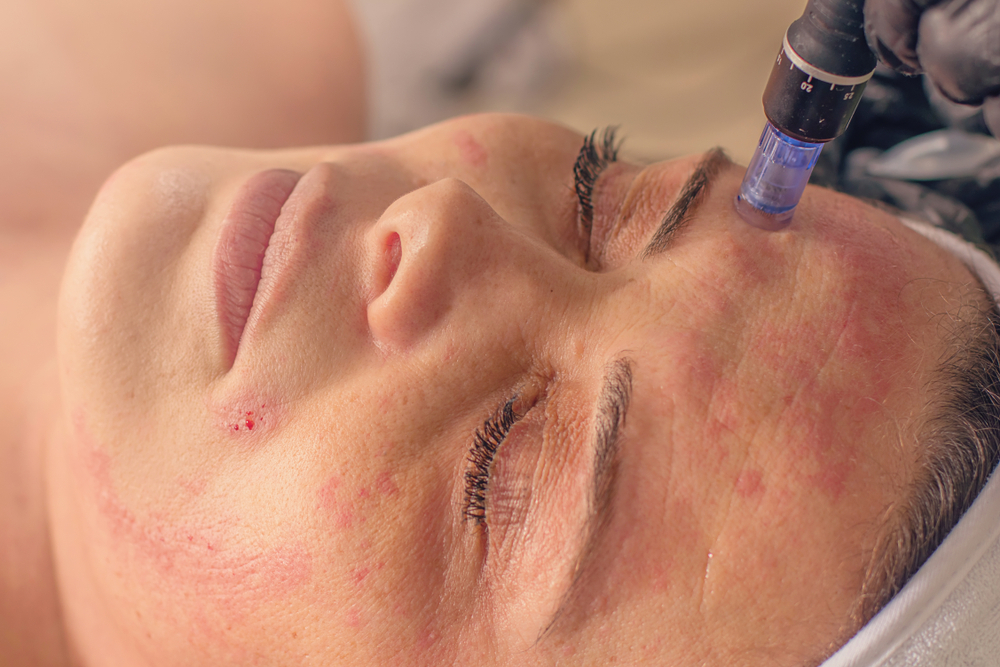
Following are a few side effects of microneedling:
- Redness and skin sensitivity: It is common to feel temporary redness and irritation of the skin immediately after microneedling. This is a typical response to the micro-injuries the needles cause, and it usually goes away within a few hours to a few days.
- Mild swelling: Some people might experience mild swelling, especially in areas with thinner skin. Usually, this swelling is only transient and goes away within a few days.
- Dryness and peeling: After microneedling, your skin may feel dry and start to peel as part of the natural healing process. Keep treated areas moisturized and avoid picking or scratching them to minimize future discomfort.
- Temporary pinpoint bleeding: Microneedling entails puncturing the skin with tiny needles, which may result in minimal pinpoint bleeding. Usually, there is little bleeding, and it ends fast.
- Pain or discomfort: Depending on a patient’s tolerance for pain and the depth of the needles used, microneedling may result in some discomfort or pain during the procedure.
- Post-inflammatory hyperpigmentation (PIH): People with darker skin tones are more prone to experiencing temporary hyperpigmentation in the treated areas. Post-inflammatory hyperpigmentation (PIH) is what this is known as, and it typically goes away on its own with time.
- Infection: Infection is dangerous if proper hygiene is not maintained during the microneedling procedure or if the skin needs to be sufficiently washed. Hence, to reduce this risk, clean the skin and the microneedling pen both before and after using it.
It’s crucial to remember that serious issues or adverse effects from microneedling are uncommon when done correctly. However, it is advised to seek medical assistance and consult a healthcare professional if you have persistent or severe side effects, such as extreme pain, protracted redness or swelling, infection signals (increasing discomfort, warmth, pus), or any other alarming symptoms.
FAQs [ Frequently Asked Questions And Answers ]
Q: After microneedling, are there any skincare products you should avoid using?
A: After microneedling, avoiding harsh or irritating skincare products is vital because the skin could be more delicate and susceptible. Avoid products that include strong acids, retinol, or exfoliants for a few days following treatment. Instead, use hydrating skincare products that are soft on the skin.
Q: Can the body also be treated with microneedling pens?
A: You can use the microneedling pen depending on the size and shape of the body. Therefore, you need to address concerns like stretch marks, scars, and uneven skin texture on places like the abdomen, thighs, or arms may be effective.
Q: Can I still use a microneedling pen when I have active acne outbreaks?
A: It is generally advised not to use microneedling pens directly on active acne lesions since it may spread bacteria or aggravate the condition. However, microneedling can help repair acne scars after the breakouts have stopped. If you have skin prone to acne, it is best to speak with a skincare expert to identify the ideal timing and method for utilizing a microneedling pen.
Q: What is the suggested frequency for using a microneedling pen?
A: Depending on the depth of the needles used and the sensitivity of the patient’s skin, the frequency of microneedling treatments can vary. However, it’s crucial to adhere to the precise instructions provided on the packaging of your microneedling pen and seek the advice of a skincare expert.
Q: How long does it take for microneedling to produce results?
A: Depending on a person’s unique circumstances, the exact skin issue is being treated. Hence, in general, observable skin texture, tone, and color changes can take several weeks to a few months.
Final Words
Now that you know, Microneedling treatments can be done at home with the help of microneedling pens, which are both practical and efficient. This can heal multiple skin issues, such as acne scars, an uneven skin tone, and fine wrinkles. But before making a purchase, weighing the benefits, drawbacks, and potential adverse effects of various microneedling pens is crucial.
Each pen has different benefits and drawbacks, including other options for needle length, customizable depth settings, usability, and durability. It’s also very important to analyze the pen’s quality and structure, including the needle material, hygiene issues, and safety measures. Consider your particular skin issues, sensitivity, and comfort level when choosing the best microneedling pen for your requirements. Always consult a dermatologist or other skincare expert to be sure the pen you choose is appropriate for your skin type and condition. Remember that for microneedling to be safe and successful, correct technique, hygiene, and aftercare are crucial.
